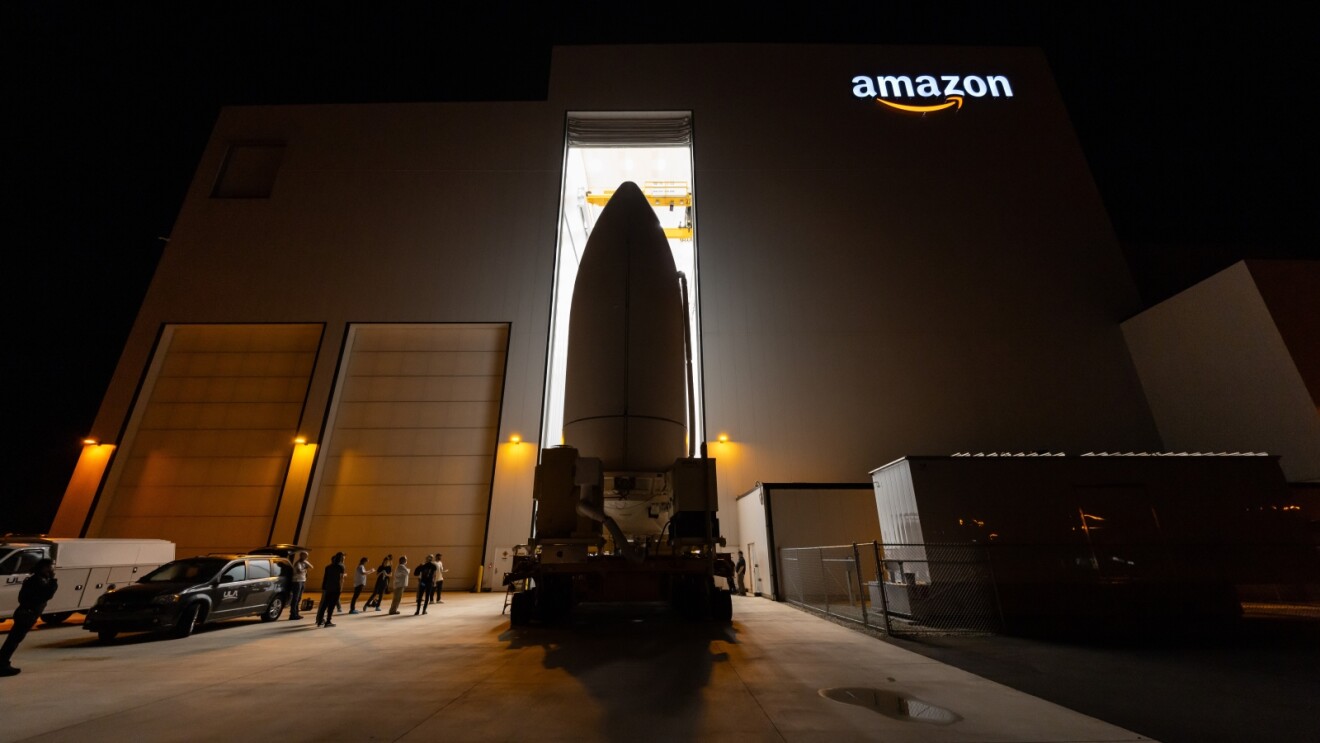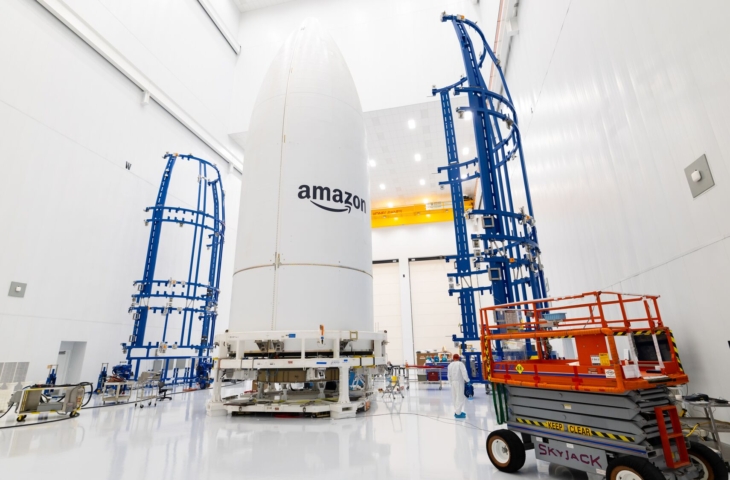Amazon officially kicks off Project Kuiper with an initial launch of 27 satellites. In the long term, Amazon aims to compete with Starlink.
Amazon announces in a blog that Project Kuiper is (literally) ready for the big launch. The first launch is scheduled for April 9. A United Launch Alliance Atlas V rocket will place 27 satellites into low Earth orbit. Eventually, the satellite network will expand to more than three thousand satellites.
Following earlier tests with two prototypes in October 2023, this is the first time Amazon is launching its final satellite design in large numbers. The KA-01 satellites are an evolution of the earlier prototypes. Each satellite is equipped with improved antennas, processors, solar panels, propulsion systems, and optical inter-satellite links. To reduce light pollution, the satellites received a coating of reflective material that scatters sunlight.

Competitor for Starlink
Amazon isn’t just launching three thousand satellites into space for no reason. The purpose of Project Kuiper is to offer satellite-based internet services worldwide. With Project Kuiper, Amazon is thus directly competing with SpaceX’s Starlink internet.
To receive the internet at your home, you need to install a terminal. Amazon already showcased its antenna in 2023, and the kit will cost around four hundred dollars. The first antennas can support speeds up to 100 Mbps, but Amazon aims to enable gigabit speeds in the future. Exact prices for the equipment and subscription plans, as well as possible speeds, will become clearer once more satellites are in orbit.
Three Thousand Satellites
Like SpaceX, Amazon opts for LEO technology. LEO satellites orbit the Earth at high speed and at lower altitudes (350 km) compared to MEO or GEO satellites, which are positioned at high altitudes. This has the advantage of enabling relatively low latency, but you need a whole swarm of satellites to establish a stable network.
Amazon starts with 27 satellites, but eventually, there will be 3,200. Amazon will send these into space over eighty launch moments. The first launch will be live-streamed on April 9 and is scheduled for around 6 PM Central European Time. For comparison: the Starlink network already consists of 7,000 LEO satellites.
More and more internet companies are experimenting with satellite internet, mainly to reach remote areas without network infrastructure. In a densely populated country like Belgium, the need is much lower, but in Ukraine, for example, Starlink internet offers an alternative in areas where network cables have been damaged by the war. In the context of geopolitical tensions, European alternatives to Starlink are emerging, such as Orange.
read also
